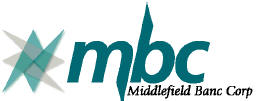conservative and disciplined approach to credit and risk management, however the economic challenges caused by theCOVID-19 crisis have had an impact on credit quality and cannot be discounted. Macroeconomic trends have yet to fully capture the impact of theCOVID-19 crisis, but we believe underlying economic weaknesses in our markets existed on March 31, 2020. We expect further pressure on our net interest margin due to the recent 100 basis point reduction in the Federal Reserve target rate, and we will continue making the necessary adjustments to our allowance for loan losses as theCOVID-19 crisis evolves.”
“We are focused on managing all aspects of the business that are under our control as we navigate theCOVID-19 crisis and a lower rate environment, while supporting our customers, employees, communities, and shareholders. This includes pursuing near-term strategies that protect the health and safety of our employees and customers, control risk, proactively manage expenses, and support our dividend policy. As we respond to theCOVID-19 crisis and the unprecedented environment it has created, I am thankful for the proven leadership team we have assembled and our loyal customers, employees, and shareholders.”
Income Statement
Net interest income for the 2020 first quarter was $10.0 million, compared to $10.2 million for the 2019 first quarter. The net interest margin for the 2020 first quarter was 3.63%, compared to 3.69% for the same period of 2019. For the 2020 first quarter, noninterest income was essentially unchanged from the same period last year, at $1.1 million. Noninterest expense for the 2020 first quarter decreased 3.3% to $7.3 million, from the 2019 first quarter.
Donald L. Stacy, Chief Financial Officer stated: “Throughout 2019, we remained focused on managing risk and pricing on loans, while prudently controlling our funding costs on deposits. While these strategies impacted loan growth last year, we ended the 2020 first quarter with a 16.4% year-over-year reduction in nonperforming assets, and a 42.9% year-over-year reduction in charge-offs. As a result, we entered this challenging market environment with improved asset quality trends. However, since theCOVID-19 crisis began, we have experienced an increase in requests for deferrals and we are working on providing temporary relief to our customers. With an equity to assets ratio of 10.93%, we have strong liquidity and have access to additional liquidity sources if needed to navigate this challenging period.”
Balance Sheet
Total assets at March 31, 2020, decreased 5.2% to $1.21 billion, compared to $1.28 billion at March 31, 2019. Net loans at March 31, 2020, were $988.8 million, compared to $997.3 million at March 31, 2019. The 0.9% year-over-year decrease in net loans was primarily a result of a $35.5 million decrease in multifamily commercial real estate loans, and a $15.4 million decline innon-owner occupied commercial real estate loans, partially offset by a $21.0 million increase in commercial and industrial loans, and an $11.9 million increase in construction and other loans.
Total deposits at March 31, 2020, was $1.00 billion, compared to $1.04 billion at March 31, 2019. The 3.5% decrease in deposits was primarily a result of lower time, money market, and saving deposits, partially offset by higher noninterest-bearing and interest-bearing demand accounts. The investment portfolio, classified as available for sale, was $103.0 million at March 31, 2020, compared with $98.1 million at March 31, 2019.
Stockholders’ Equity and Dividends
At March 31, 2020, stockholders’ equity increased 0.8% to $132.7 million compared to $131.7 million at March 31, 2019. On a per share basis, shareholders’ equity at March 31, 2020, was $20.83 compared to $20.22, an increase of 3.0%, over the same period last year.

